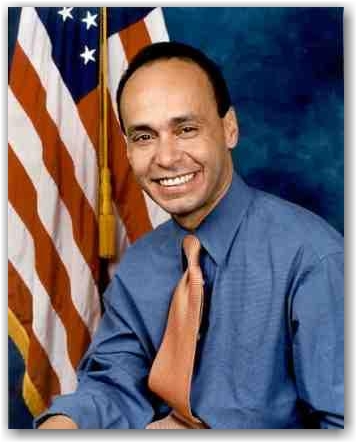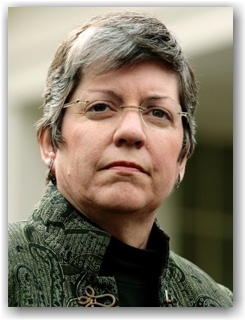The EB-5: A Creative Solution to Green Card Quota Backlogs
January 4th, 2009By Brandon Meyer
Associate and Contributing Writer
The system for allocating employment-based immigrant visas (“IV”) is broken. The January 2009 Visa Bulletin issued by the Department of State (“DOS”) continues to signal interminable waiting periods for those hoping to apply for permanent residence, specifically in the second and third preference categories for Chinese and Indian nationals. I have previously written for ILW.com that a large basis for this mess stems from the temporary expansion of the H-1B cap from 1999-2003 (See “Three Cheers For The New, Improved TN! On Second Thought…” Short of a major modification in the way IV’s are allocated, combined with a substantial increase in total numbers available (or long-suffering immigrants simply giving up and leaving the United States), there is no relief in sight. Many observers are predicting comprehensive immigration reform (CIR) legislation in 2009 to solve this problem, although I unfortunately believe that such a program is unlikely for the foreseeable future. The best that may be achievable in 2009 may be piecemeal relief in specific areas, such as relief for nurses and other health care professionals.
So what is one to do while stuck in a green card queue that is seemingly without end? One could continue to wait around for a long-promised CIR to set them free, or they could continue to wait for their priority date to someday become current. After all, many thousands of people have been waiting for several years in this endlessly absurd state of limbo, so what are a few more years of waiting? Unfortunately, weighing the improbable (CIR) versus the unreliable (sustained forward movement of priority dates) has become an unacceptable choice for these many thousands who suffer from the day-to-day uncertainty that the broken IV system breeds. Time is too precious a commodity to waste. Some fresh ideas are needed to offer meaningful solutions to those who have been long-suffering in the twilight zone of the IV allocation system.
Potential outside the box solutions to the problem of the IV quagmire do exist and are frequently overlooked by many immigration practitioners accustomed to seeing the world as a linear path that starts with an H-1B, grows into a Labor Certification, leading seamlessly to an immigrant visa petition (Form I-140), then happily commencing with the issuance of a green card after approval of an Adjustment of Status Application (Form I-485).
To be sure, many people have benefitted from this straightforward, conventional approach. However, if you’re an Indian national staring at the January 2009 Visa Bulletin and reading that only individuals in the third-preference category with a priority date of October 15, 2001 or earlier are eligible to apply for permanent residence, this straightforward approach may seem more like a perpetuation of an endless nightmare. Even second-preference Indian nationals looking at an eligibility date of July 1, 2003 (only a mere five and half years ago!) must be wondering whether the Iraq War will both begin and end before their priority date becomes current.
So what can be done to avoid the uncertainty and slothful movement of employment-based priority dates? Marriage to a United States citizen is one approach, but one that will not be the focus of this article. Instead, I will argue that individuals stuck in priority date limbo should consider the EB-5 category for immigrant investors, subject to the independent advice of financial and tax professionals and after conducting thorough due diligence before proceeding. Annual allocation of IV’s in the EB-5 category is 10,000, not less than 3,000 of which are reserved for investors in so-called Targeted Employment Area’s (“TEA”), and 3,000 reserved for investors in USCIS designated Regional Center’s (“RC’s). There is no current backlog in the EB-5 category, nor has there ever been. I will argue that the EB-5 program now presents a potential end-around of the grinding backlogs that persist in the second and third employment-based IV categories.
Am I really suggesting that the EB-5 category now represents a credible alternative to employment-based immigration in the second and third preference categories, the one that requires a $1 million investment and plagued by a nearly 100% denial rate in the recent past? Yes. There are now many viable investment options that either qualify as an EB-5 Regional Center or as an investment project within a TEA. Qualifying RC and TEA projects require an investment of $500,000 and do not mandate active management of the EB-5 enterprise, unlike the traditional EB-5 program which requires a $1 million investment, making the EB-5 program more accessible to a broader range of people than is often realized. Secondly, many of the problems that haunted the early days of the EB-5 program have seemingly been overcome. Practitioners have become more skillful in preparing successful EB-5 petitions, while marginal EB-5 projects have disappeared from the landscape through natural selection. EB-5 approval rates have risen in recent years, topping 76% and 82% for 2007 and 2008 respectively. Approval rates for subsequent applications to remove the conditional permanent residence status (Form I-829) that initially comes after EB-5 approval were 69% and 73% for 2007 and 2008. USCIS is also beginning to develop a more user-friendly, realistic adjudicatory approach to EB-5 matters, by centralizing adjudication with the California Service Center (“CSC”) and providing specialized training to a dedicated unit of adjudicators. If successful, more consistent and commonsensical adjudications should be forthcoming.
I do not seek to minimize the financial risk associated with investing $500,000 in a project in order to avoid the backlogged IV queue. No EB-5 investment project, nor any other investment, is risk-free and $500,000 is a lot of money for most people. However, $500,000 is not as much money as it was when the EB-5 program was first enacted in 1990 and the financial risks associated with investing one’s future employment and financial prospects in the uncertainty of haphazard priority date movements, are unquantifiable, but undoubtedly large. For an Indian national waiting for more than seven-and-a-half years to be eligible for permanent residence, what if the unimaginable occurred and priority dates retrogressed further? What if the economic downturn leads to widespread job losses and a weak labor market that causes people to either lose their priority date and/or their AOS applications, rendering years of waiting for permanent residence a complete loss? What if an angry left-wing U.S. Congress, beholden to labor unions who pine for the imagined glories of the 1950’s and seizing upon a national mood of unhappiness with an unstable economic climate, decide that one ‘obvious’ solution to U.S. economic ills is to curtail IV numbers in employment-based categories? In the zero-sum logic that often passes for insight in trade and immigration debates, many politicians can easily equate curtailing IV issuance by 75,000 as a sure-fire method of ‘creating’ 75,000 jobs for U.S. citizens. The knock-on effect for current priority date backlogs would be immense.
Given the present backlogs that plague employment-based IV issuance and uncertainties with the world economy and whatever trade and immigration laws the U.S. Congress may enact in response, investing in a qualifying RC or TEA project may serve as an excellent hedge for individuals stuck in the priority date quagmire. Pursuing an IV through the EB-5 program does not require an individual to abandon any pending or approved Labor Certifications, IV petitions (such as an I-140 petition), or pending I-485 application that a U.S. employer has filed on their behalf. Individuals pursuing permanent residence through both conventional employment-based methods and the EB-5 category can pursue these options concurrent, essentially seeing which process gets them to the finish line first.
Currently, the race is something akin to a race between the tortoise and the hare. With no current backlogs, processing times currently averaging 7.5 months, and with premium processing a possibility in the future, becoming the beneficiary of an EB-5 petition may save individuals stuck in priority date limbo several years of time and more importantly, uncertainty. Once the EB-5 petition and the following green card applications are approved (on a conditional basis), a beneficiary can apply to have the conditional aspect of permanent residence status removed 90 days prior to the two-year anniversary of the grant of conditional permanent residence. At current processing times, an individual may navigate the entire EB-5 process from initial filing to the bestowal of permanent residence without conditions in approximately three to four years. While the prospect of waiting another three to four years may seem unpalatable, unlike the backlogs that prevent the filing of a green card application for many, most of the waiting time for the EB-5 process is composed of USCIS processing and the statutory two-year period of conditional permanent residence for successful EB-5 beneficiaries. For those stuck in the normal employment-based green card queue, already waiting several years just to become eligible to apply, this must represent an improvement.
Some may argue that the timing could hardly be worse to invest $500,000 in an EB-5 project, paradoxically, the timing may never be better. Buying at the bottom of the market will always show a greater percentage gain when the market recovers (and may make the I-829 removal of conditions application an easier proposition). While the current economic news is overwhelming negative, this situation will not last forever. The economy will improve. It always has and always will.





